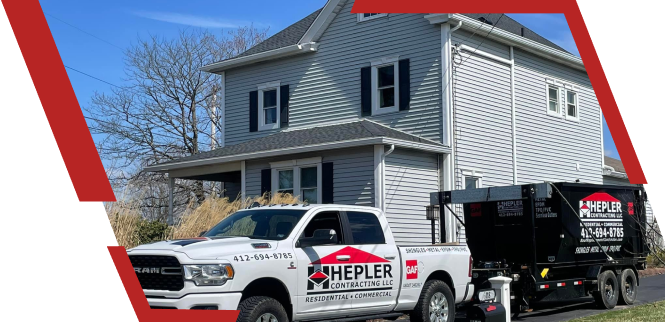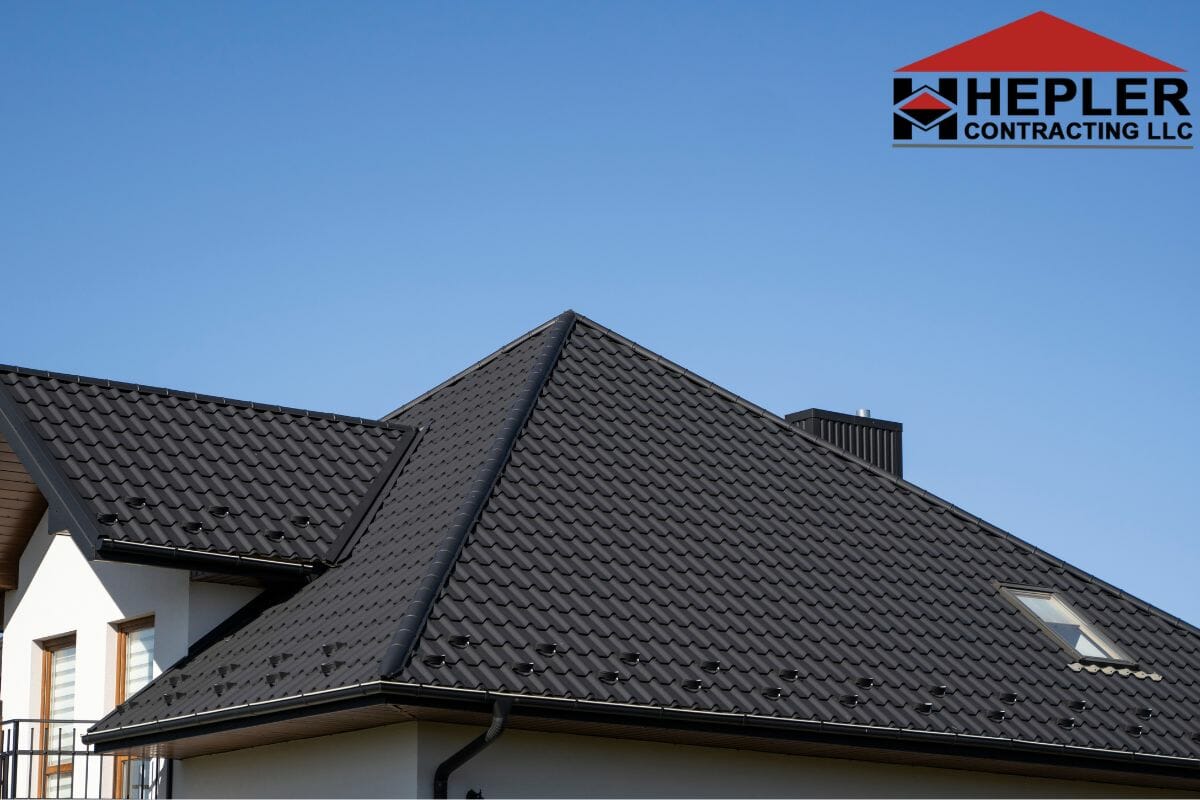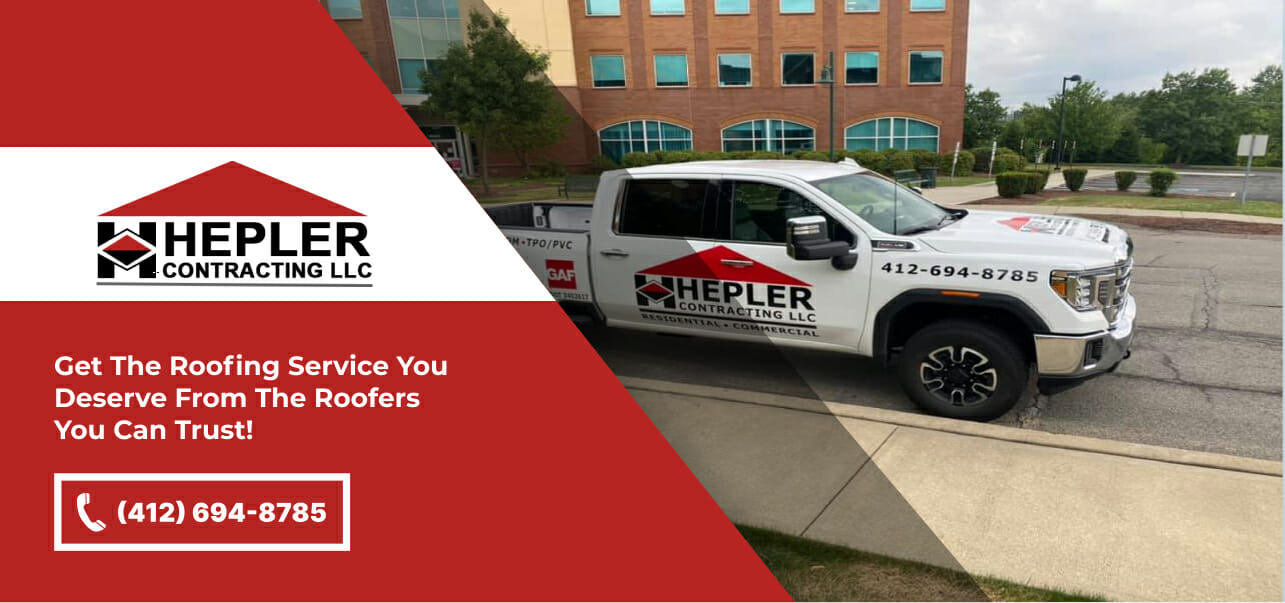Roofing materials come in a wide range of options, such as wood shingles, asphalt shingles, architectural shingles, tiles, and the list goes on. Though now, metal roofs have begun to steadily rise in popularity over other materials. They can be used on any house, no matter where you live or the style of your home. There are many types of metal roofs to choose from, and each has its own unique characteristics and benefits.
Here we’ll look at four common types: Aluminum, copper, zinc, and galvalume. Each has its advantages and disadvantages so let’s get started!
Aluminum Roofing
Aluminum roofing is one of the most popular types of metal roofing systems. This is because it has various benefits, from its durability to its ability to resist corrosion.
Aluminum roofing is used in both residential and commercial roofing systems, making it incredibly versatile and easy to install. It also comes in various colors, so you can find an option that suits your home best.
If you’re looking for an affordable way to update the look of your home or business with a durable material that will last for many years to come, aluminum roofing could be your ideal choice!
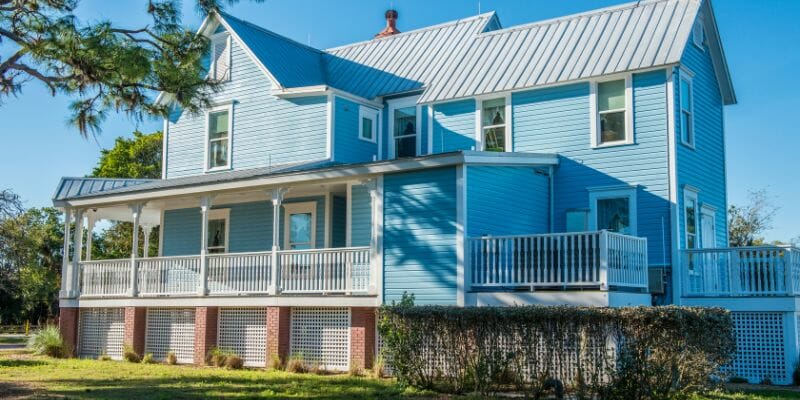
Pros
Perfect For Coastal Environments: Aluminum doesn’t corrode as quickly as other metals do when it comes into contact with saltwater and sea spray, making it ideal for areas where corrosion is likely to happen quickly. This makes it a great choice for those living along the coast or near bodies of water.
Lightweight & Strong: Because it’s made of alloy, aluminum roofing is lightweight and strong. This makes it easy to install and helps it last longer than other types of shingles.
Highly Recyclable: Aluminum is one of the most recycled materials in the world, which means that when you’re ready to replace a roof of this type, you can recycle all of your old materials!
Warrantied Against Manufacturing Defects: When you purchase an aluminum roof, you know you’re getting something that will last. A limited lifetime warranty covers the product against manufacturer’s defects, so there will be no surprises when it comes time to repair or replace defective material.
Self Healing: When aluminum rusts, it forms an oxide film on its surface that protects it from further corrosion and acts as a self-healing mechanism. This means your roof won’t turn red like steel does when it corrodes.
Cons
Dents: Another concern with aluminum is that it dents very easily. If you’re going to get a new roof installed on your home, you should prioritize the careful installation of aluminum so that the roof is not prematurely damaged. If your home is located in an area with frequent hail storms, it may be better for you to choose another material for your roof.
Expensive: Aluminum is generally more expensive than other materials, such as asphalt shingles or wood shake roofs. This can make it difficult to budget if you want to save money on your new roof installation.
Thermal Movement: Aluminum panels experience greater thermal expansion than steel panels when exposed to heat. It’s important to provide enough room for these panels to expand when installing any aluminum roof. If this is not accounted for, you may experience roof leakage and failure within a short period of time.
Cost
The cost of a standard 3,000-square-foot roof is anywhere from $6,600 to $12,150 for aluminum shingles and closer to $27,000 to $36,000 for a corrugated metal roofing panel. When you look at the long-term cost savings of the two options, corrugated panels make more economical sense.
Copper Roofing
Copper is one of the most eye-catching metal roofing options in the marketplace today. It has been around for centuries and has a long history of being the popular choice amongst homeowners. It has many advantages over other materials, including its durability, resistance to corrosion and heat, and its ability to last for decades with minimal maintenance.
It also offers some distinct aesthetic advantages over other materials. With its bright color and distinctive texture, copper roofing accentuates any home or building. It can be used on many projects, from residential homes to commercial buildings and industrial facilities.
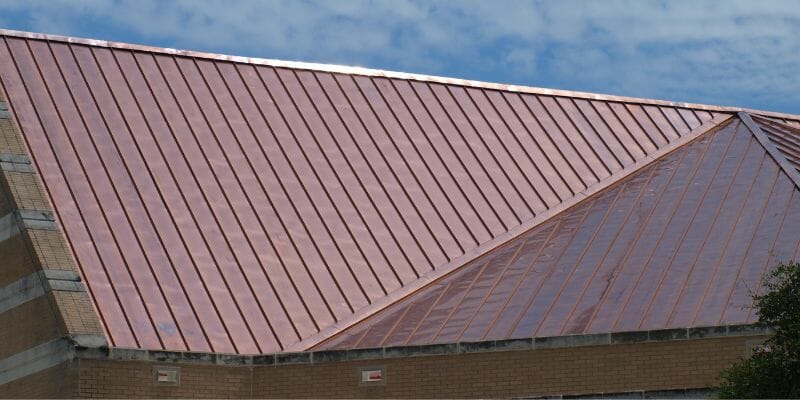
Pros
Lightweight: Copper is a lightweight roofing material that makes it easier for contractors to install and work with. Unlike heavier materials, copper won’t add extra weight and stress to the foundation of your home, making it the best option for homes that receive heavy snowfall.
Durability: Copper is a durable metal that can last long. If you install it correctly, your roof could last over 100 years.
Aesthetically pleasing: Copper roofs are attractive and make a home more interesting. As the copper ages, it develops a blue-green coloring called patina, which happens due to oxidation and sun exposure.
Eco-Friendly: Copper is a naturally sourced metal that can be reused if it’s in good condition.
Solderable: Copper roofs can be soldered, meaning that they can be welded using lower temperatures, making it easier to install flashings and gutter joints to your roof that are weather-tight.
Limited Substrate warranty: Coated copper material can come with a limited substrate warranty option. However, most bare copper products do not have a substrate warranty.
Cons
Cost: Copper roofs are costly to install, as copper is a rare metal and the price of copper fluctuates almost weekly.
Patina: Patina is the greenish-blue covering that will occur on a copper roof over time. Depending on your location and climate, the patina might turn a rich green or maintain a dark bronze look for decades.
Stains: Runoff from copper roofs can stain other materials, including siding, brick, concrete, metals, wood, and more. It’s best to talk to the experts if you’re concerned with the installation causing stains to other parts of your home.
Cost
Copper roofing can cost $600 to $1,100 per roofing square (100 square feet), depending on your chosen contractor.
Zinc Roofing
Zinc roofing is a great way to make your home look beautiful. It’s a lustrous, bluish-white metal that adds an elegant touch to any structure. It’s also incredibly durable, making it ideal for homes located in different weather conditions. When installing zinc roofing on your home, you can also choose from various styles and colors.
Pros
Eco-Friendly: Zinc is an eco-friendly material that doesn’t cause any harm to the environment when it’s in use. Plus, it’s recyclable and non-toxic, which means you can feel good about your choice.
Easy To Form: Zinc becomes soft at room temperature which makes it malleable, meaning it can be easily shaped with a hammer. This makes the material a favorite of contractors and DIYers alike to work with during installation or repairs on existing roofs.
Longevity: Zinc roofs have a 60 to 100-year lifespan, while asphalt shingles have an average lifespan of 20 years. This means you’ll be able to enjoy your roof for much longer!
Zinc: This material has a natural, outer protective layer that prevents rust, scratches, and other panel markings. If wind caused sticks or other debris to scratch the surface of the zinc roof, the metal’s protective layer would prevent scratching over time.
Cons
Expensive: One of the drawbacks to zinc roofing is the cost. Prices can vary depending on where you live and the manufacturer you purchase your materials from.
Easily Corroded: If you don’t coat the underside of your zinc roof will be more prone to corrode. This is caused by water molecules becoming trapped between the panels and underlayment, and insulation.
Cost
Zinc shingles are approximately $6.00 to $8.50 per square foot, while zinc standing seam panels run from $6.50 to $10.00 per square foot.
Steel Roofing
Steel roofing has been around for a long time, and for good reason. It’s durable, affordable, and offers many advantages when protecting your home from the elements.
There are three primary types of steel roofing: galvanized, galvalume, and weathering steel. The main difference between these types is their protective coating. Galvanized steel roofs have a zinc coating that helps prevent rusting, while galvalume roofs are coated with zinc, aluminum, and silicone. Weathering steel has a protective coating of nickel, copper, and chromium.
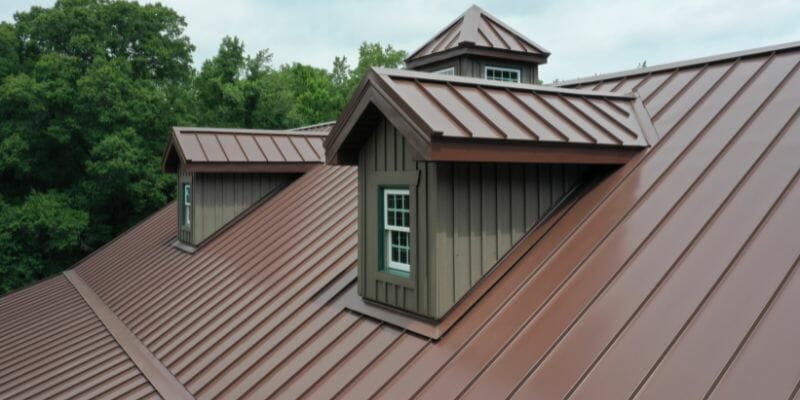
Pros
Durability: Steel is a strong material that can withstand the elements and wear and tear over time.
Fire Resistance: Steel is fireproof, which means it won’t burn as easily as wood and some other materials can when they’re exposed to high temperatures.
Energy Efficiency: With its reflective surface, steel is an excellent choice for buildings that need to reflect the sun’s heat in warmer climates or keep their interiors cool.
Cost-effectiveness: Since steel is a lightweight material, it’s less expensive than other kinds of roofing materials like tile or concrete blocks, which means you’ll get a great-looking roof at a lower price than if you were using another material instead.
Flexibility: You can choose from many different types of steel roofing shingles to match your home’s style or decorating theme.
Cons
Tension Bend Staining: One of the cons of steel roofing is its susceptibility to tension bend staining. This occurs when the material is exposed to moisture and high winds, causing it to expand and contract. This can lead to rusting or corrosion on the surface of the metal.
Not Easy To Cut: It must be cut with metal shears rather than a saw cut. This means you need special equipment and skills if you install a steel roof yourself, which can add time and money to your project.
Cost
A 100-square-foot galvalume panel costs between $75 and $250, and installation runs about $5.50 per square foot. Galvanized steel is about $3.35 to $4.25 per square foot, and stainless steel is more expensive at about $10 per square foot for materials. Installation costs should be considered, as installation of galvanized steel costs up to $15.50 more per square foot.
How To Choose The Best Type Of Metal Roof
Choosing the best type of metal roof can be difficult, but it’s manageable once you know what to look for.
The first thing you want to think about is where your house is located. If you live in a very hot climate, you’ll need a roof that reflects heat and doesn’t absorb it. If you live in a colder climate, you’ll want something that can withstand the weight of snow and ice.
You should also consider the color of the metal roofing material. If you have an older home with brick or stucco siding, you may want something that blends in with those colors. If your home is newer and has more modern siding, you may want something brighter, like bronze or copper.
You also want to make sure that whatever material you choose will withstand the elements over time. This means making sure the material you purchase is low-maintenance and won’t require repainting or repairs every few years.
Final Thoughts
Hepler Contracting LLC is dedicated to educating customers and potential buyers so they can make informed decisions about their metal roofing project. Whether you’re a homeowner, business owner, or property owner, we can work with you to select the material that will fit your needs.
Our team has years of experience working with various types of metal roofing materials, including galvanized steel and aluminum. We pride ourselves on providing excellent and affordable roofing service without sacrificing quality or craftsmanship. If you live in Wexford, or the greater Pittsburgh area, give us a call today at (412) 694-8785.
